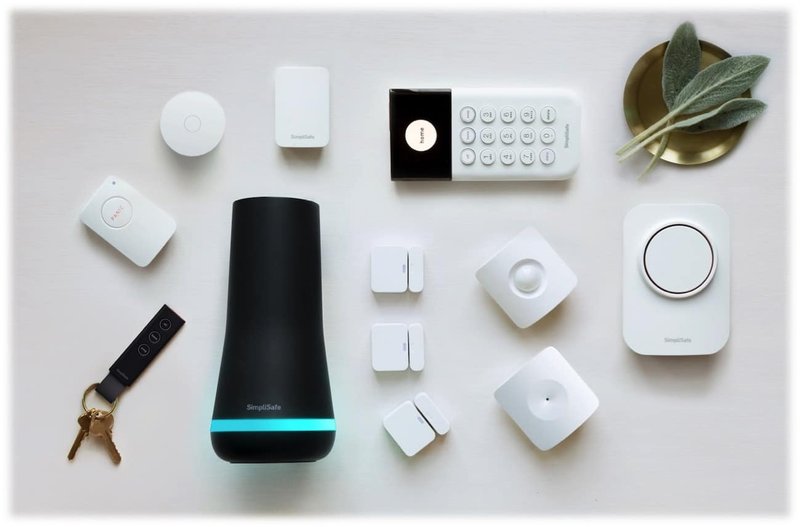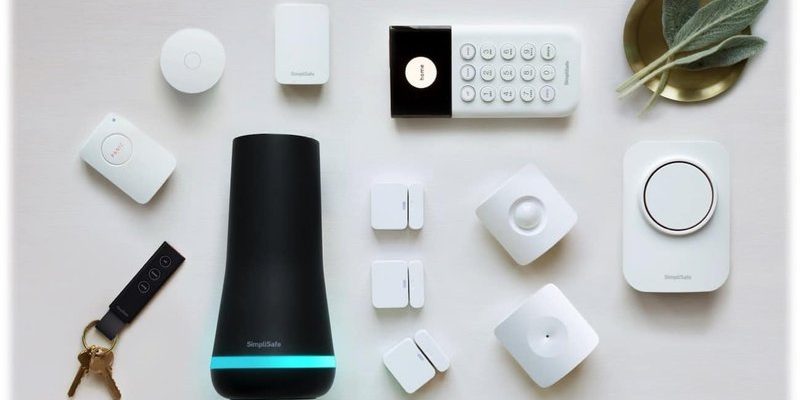
Security systems in rentals can feel a bit like hand-me-down gadgets. They’re useful, but you might not be sure who truly owns the setup, or if you’re allowed to tweak things like codes, sensors, or that oddly loud siren. With SimpliSafe, things are a little clearer than you’d think—but there are still some twists and “gotchas” to keep in mind.
Let’s unravel what makes SimpliSafe systems tick, how registration works for tenants, and what you can (and can’t) do when you’re not the landlord. We’ll take it slow, cover real-life situations, and make sure you finish knowing exactly how to claim (or not claim) your rental’s security system as a tenant.
How Registration Works With SimpliSafe Security Systems
Here’s the thing: SimpliSafe makes it super easy to set up and manage their wireless alarm systems, but registration is really about who controls the system’s monitoring and alerts. When you “register” a SimpliSafe system, you’re basically tying it to an account—think of it as claiming ownership in the eyes of SimpliSafe’s servers.
When a landlord buys and installs a SimpliSafe system, they probably registered it under their own name and email. This means all real-time alerts, video feeds, and emergency contacts are linked to their information. If you move in after the fact and want to take over, there are a few hoops to jump through.
- Account Transfer: The landlord has to either delete their account for that system or specifically transfer it to you. SimpliSafe won’t just let anyone “take over” a system registered to someone else, for obvious security reasons.
- New Registration: If the landlord is cool with it, they can wipe the system and let you set it up as if you bought it fresh out of the box. This clears out all their info—including codes, contact numbers, and monitoring service data.
- Monitoring Plan: Registration and monitoring aren’t the same thing. You can have a SimpliSafe system running without professional monitoring, but for features like police dispatch or phone alerts, registration matters.
All this boils down to one simple truth: only one person (or household) can “own” a SimpliSafe system at a time in the eyes of SimpliSafe, and it’s whoever registered it. If you want to register a landlord’s system, you’ll need their cooperation. Otherwise, you might be stuck as a guest on someone else’s plan.
What Tenants Need to Know Before Registering
You might be wondering: “Why can’t I just add myself and call it a day?” Honestly, SimpliSafe isn’t designed for multi-user registration, especially across different parties like tenants and landlords. The primary account holder controls everything—from the code that arms the system to who gets a call if a break-in is detected.
If you try to register a SimpliSafe system already linked to your landlord, you’ll run into some digital roadblocks. The app or website will show errors like “device is already registered,” or it’ll prompt for the original account credentials. It’s not a tech glitch—it’s a feature meant to protect people from unauthorized takeovers.
- Privacy: If your landlord keeps the registration, they see alerts and footage if you add SimpliSafe cameras. That might feel invasive.
- Responsibility: If you register, you become the main point of contact for all alarms and emergencies, which is a lot to manage if the property isn’t truly yours.
- Sync and Pairing: You can’t just “pair” your phone or code unless you’re the main account holder, so you’re stuck with the landlord’s settings.
Here’s a quick story: One tenant in Boston thought she could just reset the base station and start fresh, but because the landlord never removed his registration, the system kept defaulting to his account after every power cycle. She ended up calling SimpliSafe support (long wait times!) and learned there’s no secret bypass—both parties have to agree.
How to Transfer Registration: Step-By-Step
Let’s break down what you actually need to do if you want to register a SimpliSafe system purchased by the landlord. It’s a little bit like handing over a key, but with more tech and codes involved.
Step 1: Get Landlord Approval
You can’t skip this. Ask your landlord if they’re willing to transfer the system. Some landlords prefer to keep control, so start with a friendly chat and explain why you want to be the registered user.
Step 2: Landlord Removes Their Account
The landlord needs to log into their SimpliSafe account—either on the app or website—and remove (or “release”) the system from their device list. This is called a full reset. It wipes all personalized codes and monitoring info from SimpliSafe’s servers.
Step 3: Set Up As New User
Once the system’s free, you can follow the SimpliSafe setup steps:
- Unplug the base station and remove batteries for a hard reset.
- Reinsert batteries, plug it back in, and wait for the new user setup prompt.
- Download the SimpliSafe app, select “Set Up New System,” and enter your details—email, address, emergency contacts, codes, etc.
- Pair all the system’s sensors (door, window, motion) and test each one.
Step 4: Pick Your Monitoring Plan
You’ll get a choice of professional monitoring tiers or just basic self-monitoring. Professional monitoring isn’t free, so you’ll need to add your payment details if you want dispatch services.
Tip: Don’t skip the full reset step. If the previous registration isn’t cleared, you might run into sync errors or get locked out of crucial features.
What If Your Landlord Won’t Transfer the SimpliSafe System?
Sometimes, landlords like to keep a tight grip on their property—and that extends to security systems. If your landlord won’t unregister the SimpliSafe system, your options are pretty limited.
You’ll basically be using the hardware, but all the important notifications, settings, and emergency response options stay tied to your landlord’s info. You can arm and disarm it with the physical keypad (sometimes), but you’re not the registered user, so you won’t get alerts to your phone or be able to change advanced settings.
- Adding New Sensors: Often impossible without main account access. Even if you can pair a device locally, it won’t show up in your dashboard.
- Code Changes: Landlord can override your codes and see when the system’s armed or disarmed.
- Privacy Concerns: Some tenants feel uneasy if the landlord sees every alarm trigger and notification.
You might try negotiating—maybe offer to split monitoring costs or take over the monthly fee, if that’s the sticking point. But if the landlord’s still not budging, you could consider using your own temporary security system instead of relying on theirs.
Alternatives to Registering the Landlord’s SimpliSafe System
If the idea of asking your landlord to hand over security control sounds like a headache waiting to happen, you’ve got options. Here’s what a lot of renters do instead:
- Install Your Own SimpliSafe System: These systems are wireless and don’t damage walls. You can just take it with you when you move out. You’ll be the sole registered user, no awkward approvals needed.
- Try a Universal Security System: Some brands offer “universal” hardware you can set up without account transfers. These don’t always have the same features as SimpliSafe, but they’re often easier for renters to manage.
- Use Basic Security Options: Cheap battery-powered alarms, video doorbells, or even smart plugs can give you peace of mind if you can’t register the landlord’s system.
Here’s a practical example: I know a guy whose landlord refused to unregister his SimpliSafe, so he bought a battery-powered Wyze camera for his entryway. No landlord drama, no pairing issues, and he kept his privacy.
Common Troubleshooting Issues When Registering
The “tech” part of all this can throw even seasoned renters for a loop. Here are a few classic issues people run into when trying to register or sync a SimpliSafe system that belonged to someone else:
- Reset Doesn’t Work: Sometimes, even after you take out the base station’s batteries and reboot, the system still “remembers” the previous owner. In that case, a call to SimpliSafe support is usually your only option.
- Code or Pairing Failures: If you can’t pair a new remote or sensor (like motion detectors), double-check if the previous registration is cleared. If not, you’ll hit a wall every time.
- App Errors: One of the most common error messages is “Already Registered.” This means someone else’s info is still tied to the device’s serial number. You can’t bypass this with just a reset—you need cooperation from the previous account holder.
- Battery Drain After Reset: It’s rare, but after hard resets, batteries might drain quickly as the system attempts to “phone home” to the previous owner. Swapping in fresh batteries can solve this.
If you’re ever truly stuck, SimpliSafe’s customer service can manually clear a device if both parties (tenant and landlord) agree. It’s a bit of a hassle, but it’s there as a last resort.
Security and Legal Considerations for Tenants
Let me explain why this isn’t just a tech problem—it’s also about privacy, legality, and who’s actually responsible when things go south. If you’re not the registered user:
- Responsibility: In the event of a false alarm or emergency callout, the landlord might get notified (or even billed), not you. Confusing, right?
- Data Privacy: If your landlord keeps their registration, they could—at least in theory—see logins, camera activity, or sensor alerts, depending on how the system’s set up.
- Rental Agreements: Some leases specifically mention who’s responsible for security. If the landlord’s on the hook, they may not want to transfer that liability.
Honestly, if you care about privacy or don’t want to deal with someone else’s “emergency” calls, it’s usually better to install your own system or make sure you have full, documented permission to register and manage the one that’s already there.
The Bottom Line: Who Should Register a SimpliSafe in a Rental?
Here’s where it all comes together. Tenants can register a SimpliSafe security system purchased by the landlord only if the landlord agrees to transfer or remove their account first. There’s no sneaky workaround or bypass—SimpliSafe’s system is built to prevent unauthorized takeovers. If you want to be in control, you need landlord permission. If you’re stuck with their setup, you can use the hardware but won’t have any real control over alerts, codes, or monitoring.
If you value privacy, want to avoid mix-ups, or simply need full access to all security features, your best bet as a tenant is to either get permission and do a full account transfer, or bring in your own system. Either way, it’s about clear communication, technical steps, and making sure everyone feels safe—and that’s worth a friendly conversation, every time.
